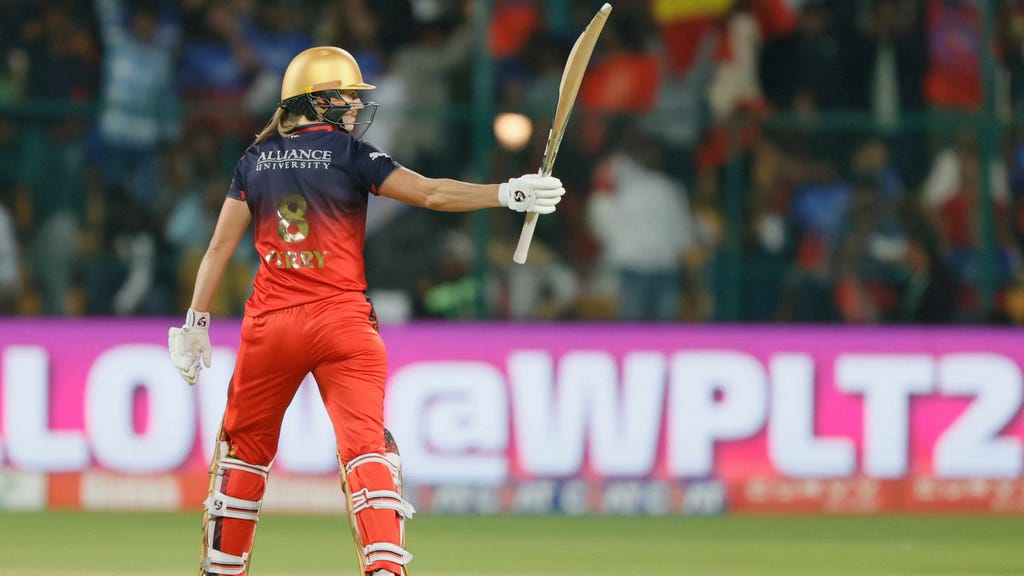What makes WPL different from IPL?
While the WPL follows the IPL model, here are 10 key differences between these two Indian cricket leagues

1. Number of Teams
Indian Premier League (IPL) began with 8 teams in 2008 and expanded to 10 teams in 2022.
Women’s Premier League (WPL) started with 5 teams and is yet to expand.
2. Squad Size & Composition
IPL teams can have up to 25 players, with a maximum of 8 overseas players in the squad.
WPL teams have a smaller squad size, with a maximum of 18 players, including up to 6 overseas players.
3. Playing XI Rules
In IPL, a team can field a maximum of 4 overseas players in the playing XI.
In WPL, a team can field 4 overseas players, with an additional slot available for a player from an Associate Nation (such as UAE, USA, or Scotland).
4. Tournament duration and location
IPL runs for nearly two months (from March 22 to May 25 in 2025) and follows a home-and-away format across multiple cities. A total of 72 matches will be played in the 2025 season, with the number possibly increasing in future editions.
WPL is a shorter tournament, lasting around a month (from February 14 to March 15 in 2025). It was initially held in a single city (Bengaluru), expanded to two cities (Bengaluru and Delhi) in 2024, and further extended to four cities—Vadodara, Bengaluru, Lucknow, and Mumbai—in 2025. The 2025 WPL season will feature 22 matches.
5. Tournament Format
IPL follows a unique format where ten teams are split into two groups of five. Each team plays 14 league matches: twice against its group members, twice against a designated team from the other group, and once against the remaining four from the other group.
The top four teams advance to the playoffs. The top two teams compete in Qualifier 1, with the winner securing a direct spot in the final. The third and fourth-placed teams play in the Eliminator, and the winner of this match moves on to Qualifier 2, where they face the loser of Qualifier 1 for a place in the final.
When the IPL had eight teams, each team played every other team twice in a double round-robin format, totaling 14 matches per team. With the addition of two new teams, the BCCI introduced this revised format to balance the schedule and manage player workload.
In the WPL, each team plays eight matches in a double round-robin format during the league stage, facing every other team twice. The team that finishes first in the league stage directly qualifies for the final, while the second and third-placed teams compete in an Eliminator to determine the second finalist.
6. Auction Budget & Player Salaries
IPL franchises have a much larger auction purse (INR 120 crore in 2025). The top players earn Rs. 15-20 crore+ per season. The highest paid cricketer of IPL is Rishabh Pant earning Rs. 27.00 crore during the 2025 auction.
WPL teams have a smaller budget (INR 15 crore in 2025). The highest-paid WPL player so far is Smriti Mandhana (INR 3.4 crore in 2023)—significantly lower than top IPL salaries.
7. Financial Scale & Revenue
IPL is one of the wealthiest sports leagues in the world, with television and digital media rights deals worth INR 48,390 crore (2023-27 cycle).
WPL’s television and digital media rights were sold for INR 951 crore (2023-27 cycle)—a promising start but much smaller than IPL’s valuation.
8. Fan Following & Viewership
IPL boasts a massive global audience, with millions tuning in every season. The 2023 IPL final alone attracted 505 million television viewers, while in 2024, JioCinema’s IPL coverage reached 620 million viewers.
WPL, though still in its early stages, has shown impressive growth. In 2024, it recorded a cumulative TV viewership of 149 million and 109 million viewers on digital platforms. The first match of WPL 2025 alone was watched by 30 million viewers on TV.
9. Expansion & Growth Potential
The IPL has expanded over the years, adding Lucknow Super Giants and Gujarat Titans in 2022, bringing the total number of teams to ten.
The WPL is set to grow, with more teams likely in future seasons, but expansion hinges on a deeper pool of quality Indian women cricketers.
10. Impact and Cultural Significance
IPL revolutionized cricket, blending sports with entertainment, and significantly influencing global T20 leagues with its franchise owners investing in them all across the cricketing world.
WPL is slowly transforming women’s cricket by providing a professional platform, inspiring a new generation of female cricketers, and promoting gender equality in sports.
While still in its early stages, the WPL has the potential to revolutionize women’s cricket, much like the IPL did for men’s cricket. With rising investments, sponsorships, and salary caps, it could become the world’s biggest women’s T20 league.


